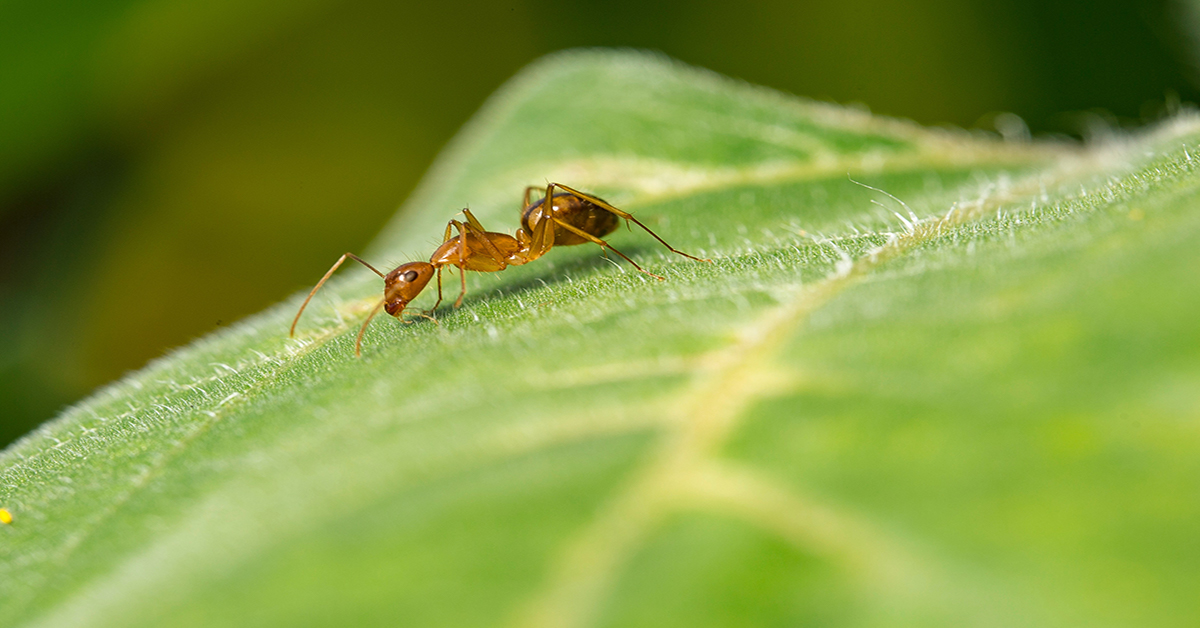By: Jay Everitt, A.C.E.
There are few pests we deal with that are as annoying for our customers as spring pests. Two of the most common are ants and mosquitoes. While these problems do make the phones ring, we have to respond in a way that builds trust with our customers, or we risk losing current business and the opportunity to gain new business. In other words, our success in dealing with spring pests can significantly impact our growth and profitability.
OHA. Let’s start with ants. In the Midwest, the most challenging ants we deal with are odorous house ants, which relocate their nests multiple times throughout spring as they seek food, water and shelter. Fluctuating temperatures and rainy spring weather patterns can change the environment very quickly and drive ants to seek better conditions.
A non-repellent product used on the exterior of a structure paired with bait on the interior has been found to be one of the most effective ways to prevent and treat for ant activity. Non-repellent chemistry, used on the exterior perimeter of a home, can last for months and will control ants from entering the structure as they emerge throughout the spring and early summer. We’ve all heard the saying, “An ounce of prevention is worth a pound of cure.” And in the case of odorous house ants, that prevention goes a long way.
Success with non-repellent products is directly tied to early, proactive treatment, with product application in January or February being crucial. This also will help limit callbacks and unnecessary drains on time and resources.
If ants do infest the interior of a structure, baits are an effective option. The newer bait chemistry is more effective than older products. Still, it’s a low-dose cure for a problem that could have been prevented.
MOSQUITOES. The wet, warmer weather that provides conditions for flowers to bloom also creates perfect conditions for mosquitoes to reproduce. Proactive measures are key when it comes to the mosquito population and it is important to educate our customers about preventive measures to take to control breeding sites. Pointing out that mosquitoes breed in areas that contain standing water like clogged gutters, trash receptacles, bird baths and other lawn ornaments can help our customers understand what to look for and eliminate to keep mosquitoes at bay.
Early treatment of breeding sites and foliage with a growth regulator, as well as using residual products on ornamentals, shrubs and other cool, dark places, can help provide our customers with extended outdoor living space they can enjoy comfortably throughout spring and summer. When you consider the financial investment customers often make into their outdoor living spaces, our mosquito treatments help them get the most out of their investments, making them more appreciative of the necessity of our services.
Preventive treatment for current customers also can allow for more time to acquire new customers. A lower rate of callbacks also allows for additional time to respond more efficiently to new customer service requests.
The spring and summer seasons are also the perfect time to find opportunities to educate customers on the importance of ongoing preventive services that can help them remain pest free throughout the year. An educated customer will recognize the value of committing to an ongoing service program to prevent seasonal pest problems.
While we may never eliminate pests, we have made monumental strides in targeted programs that keep our customers’ accounts pest free. In the end, those annoying spring pests, such as ants and mosquitoes, can provide the perfect opportunity to not just satisfy, but to wow our customers, and gain their business for the long term. Long-term customers are our best sources of referrals— to their friends, family, and co-workers — enabling the organic growth we all seek to impact the sustainability of our business.
Jay Everitt, ACE, is the Technical Director at Rottler Pest Solutions. He has been with the firm for over 25 years and completed his Associate Certified Entomologist (ACE) certification through ESA.
This Tech Talk article was originally published in the May 2020 edition of PCT magazine.

